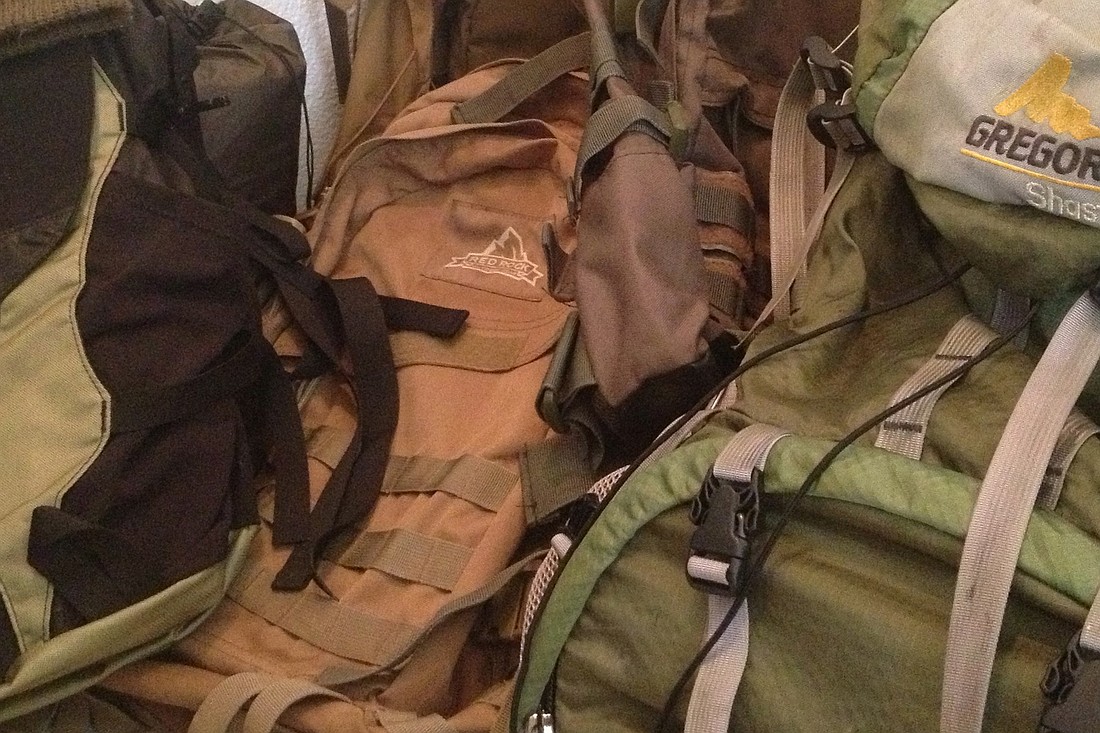- May 5, 2024
-
-
Loading

Loading

(Click “Like” to become a fan of the Palm Coast Observer.)
The first time I went backpacking, I did everything wrong.
I was about 15, enchanted with the idea of spending a few days in the woods unencumbered by a vehicle and flush with allowance money.
It was a bad combination: I bought the most expensive pack and boots I could get my hands on, figuring price indicated quality. The pack was large enough to haul several kitchen sinks, and the boots — built for tackling mountainous, rocky terrain — were needlessly heavy and bulky for Florida hiking.
I didn’t have any money left over for hiking clothes, so on my first backpacking trip, I wore my street clothes: jeans and a T-shirt. Bad idea. I came back sore and blistered, and, in the coming years, figured out a few things about hiking and backpacking in Florida.
Here are some tips for those just getting started.
The pack
If you’re day-hiking, a backpack doesn’t need to be big or expensive. A school-style pack may be fine for a few-hours trip along Flagler County's well-maintained trails.
If you’re planning anything longer, put more thought into your pack: a broken zipper or strap is a bigger problem miles down the trail than it is in town. Take a look at the stitching in stress points, and check out the zippers. Will they let rain in during a downpour, or are they covered?
A sleeve for a hydration bladder or side-holders for water bottles are important; without them, you’ll have to stop and root around in the pack every time you want a sip. A hip belt, preferably padded, is a must for if you’re carrying much weight — fasten it and loosen the shoulder straps to take some of the load off your back on the trail. Adjustable side straps that draw the pack tight around its contents are useful because they’ll keep gear from shifting around with each step.
And before you buy a pack, consider color. Do you want people to see you from far away, or would you prefer to be able to pass by others at a distance unnoticed? If you don’t want to stand out, stick to greens, greys, browns and tans.
My first pack was bright red, and I felt like a walking fire engine out there.
The threads
The biggest no-no on a trail is denim. It’s heavy, bulky to pack and holds water like a plugged tub — something I learned the hard way on that first backpacking trip at 15.
And worse, it’s cotton, which loses all of its insulation value when wet and can chill you in cold weather or contribute to hypothermia.
In general, avoid wearing cotton, cotton blends and other fabrics that lose insulation value when wet — including rayon, tencel, viscose and lyocell, and some forms of bamboo — as the ‘base layer’ next to your skin anytime the weather might turn nippy.
Even if it doesn’t rain, the fabric can chill you when it becomes damp from sweat. Go for wicking, lightweight fabrics you can layer.
The kicks
If you’re carrying a light load on a day hike along a well-maintained trail, you might not need hiking boots. Wearing the extra weight on your feet might not be worth it, and sneakers might be better.
If you’re hefting weight in your pack for a longer hike or an overnight trip, though, or planning to hike on rougher ground, consider a light pair of boots.
Waterproof boots are usually not the best for hiking, because they don’t breath well. And remember, water can still come in over the top of a waterproof boot, and if it does, it won’t drain out quickly. Flagler County has plenty of swampy land.
And don’t make the mistake I did by using the big, heavy boots meant for backpackers tackling mountains up north. After a day of hiking, you'll feel you've been hauling a mountain on each foot.
BOX: Emergency essentials:
Remember to take these basics with you on hiking trips:
• First aid kit
• Extras of any medications you use regularly
• A compass, and a trail map in places where one is available (Don’t rely solely on your smart phone or a GPS unit!)
• A flashlight or headlamp
• A fire starter
• Extra water and food
• Sun protection and insect repellent
• Extra clothing for cold or rainy weather
• A small repair kit for your pack, with needle, thread and a small knife or multi-tool
• A whistle or other sound-making device for an emergency
• A lightweight emergency shelter, like a tarpaulin